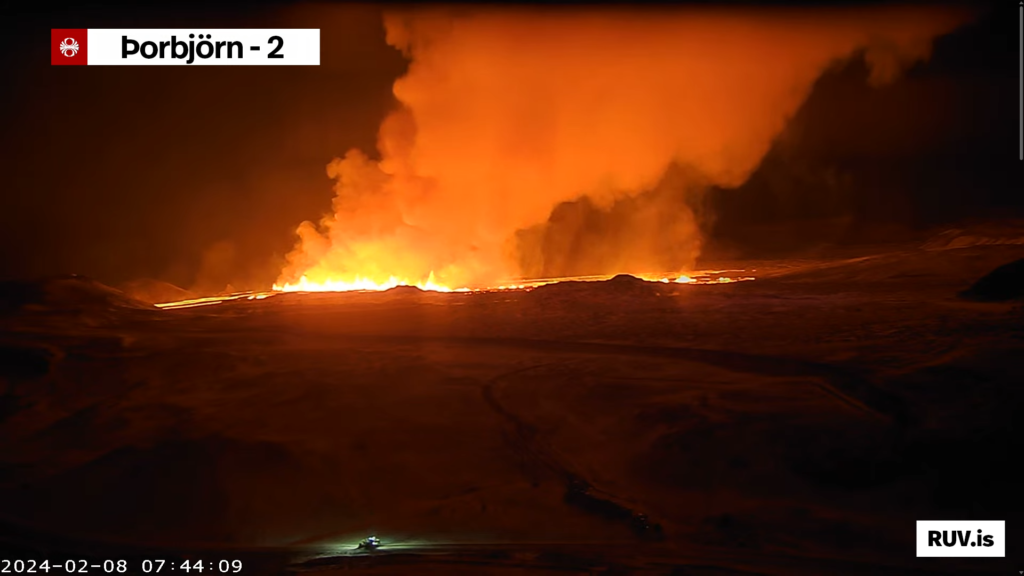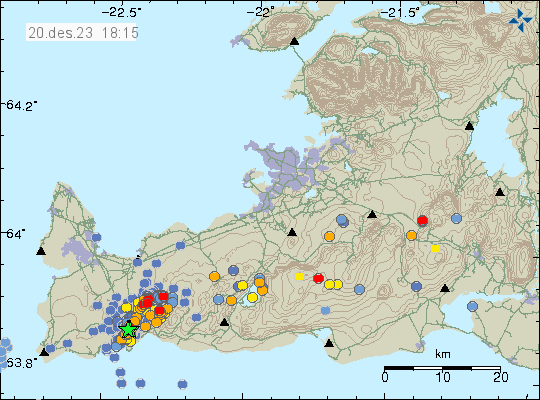This is a short update on the eruption at Sundhnúkagígar.
- Four hour GPS data shows that inflation has already started in Svartsengi volcano, that is currently erupting. This inflation seems to have started soon as the eruption started to get lower around 13:00 UTC.
- The lava flow damaged the hot water pipe from Svartsengi power plant and now around 26.000 people on the Reykjanes peninsula are without hot water. There is also some damage to the power infrastructure, but that is minimal and that power has been restored on the power lines that are next to the lava flow. The situation on the cold water is unclear, but it was at risk of damage.
- This eruption was larger compared to the eruptions on 18. December 2023 and on 14. January 2024.
- Small ash cloud formed today and the reason for that, according to experts in the news. Was that the eruption in part of the fissured ended so suddenly with a pressure drop that the fissure walls collapsed, allow ground to get in touch with lava and then ground water started to flow on the lava. Resulting in two clouds, one dark and a steam cloud. This was large for an about hour or two. Steam cloud was ongoing at writing of this article, but darkness prevents me from seeing if this has stopped. It is likely though.
- The eruption is ongoing in two to three craters at the writing of this article.
- It is expected, based on current rate of how much the eruption is slowing down that it is going to end tomorrow, 9. February or on 10. February.
- Next eruption is going to be in March around 6th to 18th March if current pattern holds for Svartsengi volcano. There’s nothing to rule out that a new eruption might happen sooner. It is impossible to know what happens next in Svartsengi volcano eruptions.
If anything more happens. I’ll post update soon as I can.







